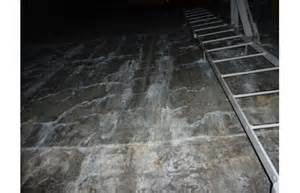ASR – CONCRETE DEGRADATION AT SEABROOK STATION
By C-10 board member Sarah Doenmez
Where is concrete used in nuclear power plants? Why should I care?
Nuclear power plants use a lot of concrete to shield people and the environment from the radioactivity that is created in the production of electricity by atomic fission. Every reactor has a containment dome made of concrete, as well as shielding walls, storage facilities, floors, and other structures. Most if not all structures for the storage of nuclear waste are made of concrete, too. Concrete walls are considered the primary way of keeping the radiation created by nuclear power plants out of our world.
Not only is concrete used in nuclear power stations, but it is also used extensively in nuclear waste storage facilities. Concrete is used for spent fuel pools, dry cask storage, and burial of nuclear waste – whether a facility like the federal government’s Waste Isolation Pilot Plant, or “WIPP,” in concrete lined trenches, or placing waste in concrete casks in unlined trenches. Concrete is also used in above-ground temporary storage of nuclear waste.
However, the nation’s nuclear power plants are aging, as are the concrete structures that comprise them. Depending on where the plant is located, the signs of degradation can vary.
Seabrook Station & ASR
In 2009, a problem that would soon be identified as Alkali-Silica Reaction, or “ASR,” was first identified at Seabrook Station nuclear power plant. ASR is a progressive and irreversible chemical reaction in concrete when in the presence of moisture. While initially a slow process, the further it spreads, the faster it spreads.
ASR damage in the form of micro-cracking exists in 80 – 85% of Seabrook’s structures. ASR has caused “building deformation events” since 2014, notably in the outer containment structure. These deformations can cause misalignments in pipes, fire protection, and other instrumentation. ASR is known to be present in the spent fuel pool as well. ASR can affect rebar anchoring and reinforcement, especially by altering the load of the concrete. The full extent of cracking at Seabrook is not known, especially interior to the concrete.
According to plant-owner NextEra, 8-12 buildings at Seabrook are at stage 3 of ASR degredation, and 50 each are in stages 1 and 2, with stage 1 being the least severe.
There is no known remedy or repair for ASR, and its rate of progression at Seabrook is not known.
Download this C-10 Fact Sheet on ASR.
The concrete that protects us from the radioactive by-products of nuclear energy is crumbling at Seabrook Station.

Photo from sgh.com
Why Does Concrete Degrade?
There are different factors that contribute to the degradation of concrete: contact with aggressive water (water which is high in certain chemicals), contact with salt, changes in temperature, contact with radioactivity. Some factors affect the structure of the atoms in the concrete. Others affect the paste that holds concrete together, others create space between the concrete and the paste. All concrete degrades over time, and degrades in different ways. Different types of degradation can affect the strength, elasticity, ductility, and load-bearing capacity of concrete.
One significant conclusion reached in a study done for the NRC shows that temperature fluctuations can cause degradation in concrete, and that such temperature changes take place in nuclear power reactors. “Elevated temperatures have two different effects on concrete. One involves phase transformations of the concrete constituents under high temperatures; the other refers to mechanical damage in the form of spalling. Both effects may result in significant deterioration of the stiffness, strength, and ductility of concrete and concomitant loss of load-bearing capacity . Phase transformations depend primarily on the temperature level, but not on the rate of temperature changes. Spalling damage occurs under high heating or cooling rates. A moderate elevation in temperature can occur in concrete exposed to gamma radiation.“ (NUREG CR-7171, p. 1) The radiation in a nuclear power plant causes temperatures to rise. We can be sure that this type of degradation is occurring in nuclear power plants.
Another significant finding in the study is that the radioactivity in a power plant can cause changes in the atoms of the elements which form the concrete, as well as in the water in the paste that holds the concrete together. Contact with radioactivity in its different forms creates concrete degradation. Since we know that the reactor cores of nuclear power plants contain radioactivity, one can only assume that the concrete of the containment domes and the storage vessels is degrading and will degrade further.

